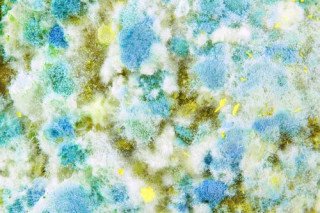Professional Mold Remediation Services
Don't Let Toxic Mold Put Your Family's Health at Risk
Stop mold damage before it spreads. Call now for a free, no-obligation estimate from a local remediation expert.
Free Estimate · Zero Obligation · Available 24/7
Blue Mold: Is It Dangerous & Should You Be Concerned?
You eat mold...
No, seriously — you’ve probably done it more than once. Blue cheese, anyone?
But when blue mold shows up in your home — on walls, ceilings, or wood — it’s a completely different story. And that’s exactly what we’re going to cover.
🎨 What Is Blue Mold?
Blue mold is commonly caused by Penicillium expansum, a fast-growing fungus that thrives on moisture and decaying organic matter. It’s well-known for:
- Spoiling fruits, vegetables, and soft foods
- Producing patulin, a mycotoxin harmful to humans and animals 1
- Growing on water-damaged building materials like drywall and plywood
While some forms of Penicillium are used in medicine and cheese production, the kind you’ll find on your walls should never be ignored.
🔬 What Is Penicillium Mold?
Penicillium is a genus of mold with over 300 species — many harmless, some helpful, and others hazardous.
- Found both indoors and outdoors
- Grows in basements, attics, crawlspaces, and kitchens
- Can trigger respiratory issues in people with allergies or compromised immune systems
Penicillin Comes From Penicillium — So It’s Safe, Right?
Not quite. Just because Penicillium gave us penicillin doesn’t mean you want to breathe it in or live with it on your walls. Blue mold in your home often signals chronic moisture problems — and where there’s one type of mold, others (like toxic black mold) may follow.
📚 Source: National Library of Medicine – Penicillium and Indoor Mold Exposure
⚠️ Is Blue Mold Dangerous?
Here’s the short answer: It can be.
Health Risks of Blue Mold:
- Causes sinus irritation, coughing, and wheezing
- Triggers allergic reactions in sensitive individuals
- May worsen asthma symptoms
- Some species produce mycotoxins like patulin (especially on food)
In the Home:
- Indicates excess moisture or past water damage
- Releases airborne spores that spread quickly
- May open the door to Stachybotrys (black mold) colonization
🧠 Pro Tip: Blue mold isn’t always blue. It can darken, change colors, or mix with green and black molds over time.
🧽 How To Remove Blue Mold in a House
If you’re dealing with blue mold indoors, take action fast:
🔴 Call a Mold Pro If:
- The area is larger than 10 square feet
- Mold is growing inside walls or HVAC systems
- You or someone in your household has health sensitivities
📞 Schedule a professional mold inspection →
🟢 For Small, Surface-Level Spots:
- Wear proper PPE (gloves, N95 mask, goggles)
- Use vinegar or borax solution
- Remove and replace contaminated drywall or insulation
- Ventilate and run HEPA air scrubbers after cleanup
🔄 Always fix the source of the moisture or it will return.
🧀 Blue Mold on Food: What’s Safe?
Some blue molds are intentionally added to foods like:
- Blue cheese
- Roquefort
- Gorgonzola
These are safe and approved by the FDA.
But if blue mold shows up on:
- 🍎 Apples
- 🍞 Bread
- 🧁 Leftovers
You shouldn’t eat it — even if you cut off the moldy part. Soft foods allow mold toxins to penetrate beneath the surface.
❌ Bottom line: If it's not cheese, toss it. Source: USDA Mold on Food Guide
❗ Blue Mold Can Turn Into Black Mold
Mold colonies change over time. What starts as a harmless blue patch on damp wood may attract other mold species — like Stachybotrys chartarum (black mold).
That’s why early detection and removal is so important. Don’t wait until the problem gets worse.
🧼 Learn more about mold remediation →
❓ FAQ: Blue Mold in the Home
Is blue mold dangerous?
Yes — especially indoors. It can cause respiratory irritation and may signal deeper water damage or mold colonization.
What causes blue mold?
Moisture + organic material + time. Blue mold loves wet drywall, furniture, cardboard, and carpet.
Can I clean it myself?
Only if it’s a small area and on a non-porous surface. If it's on drywall or larger than 10 sq. ft., hire a professional.
Is blue mold on food safe?
Only if it’s from regulated food molds like those in blue cheese. Discard any accidental blue mold on produce, bread, or leftovers.
Does blue mold turn black?
It can. Other molds may take over a blue mold colony, especially in consistently damp areas.
Explore Related Topics:
Notice an update we should make?
We strive for accuracy. Contact us here if you see incorrect or outdated info on this page.

